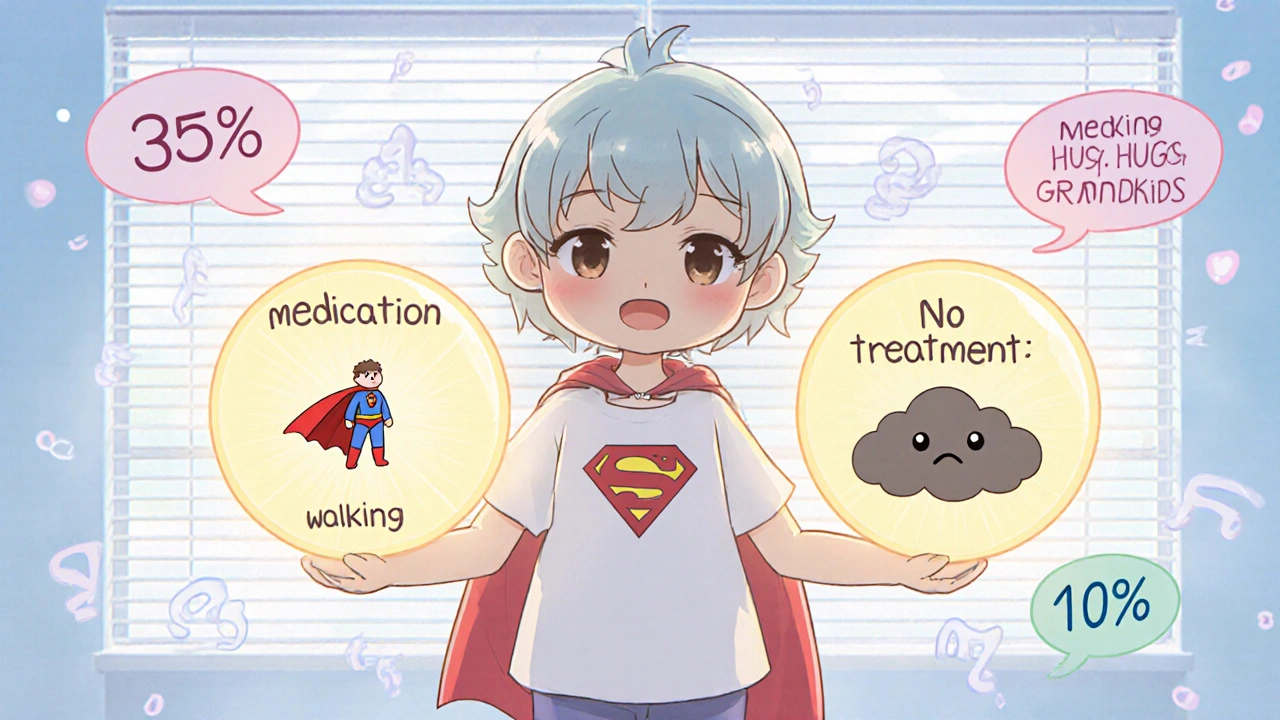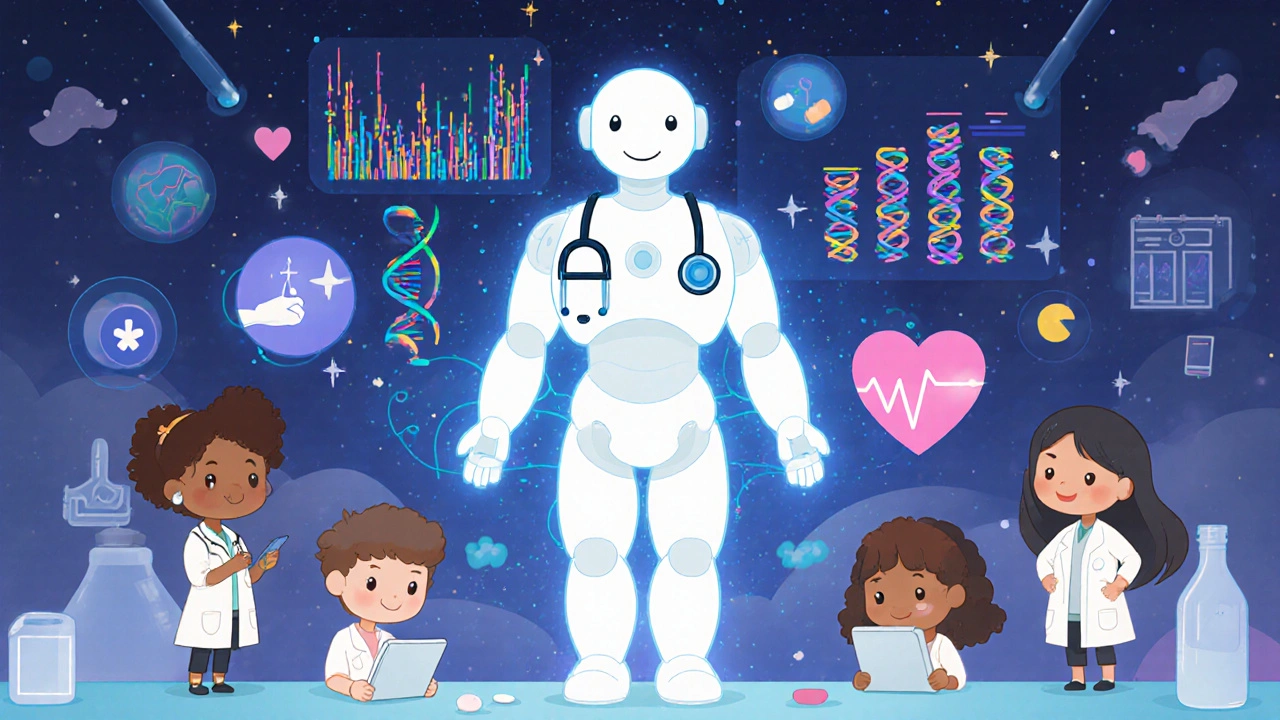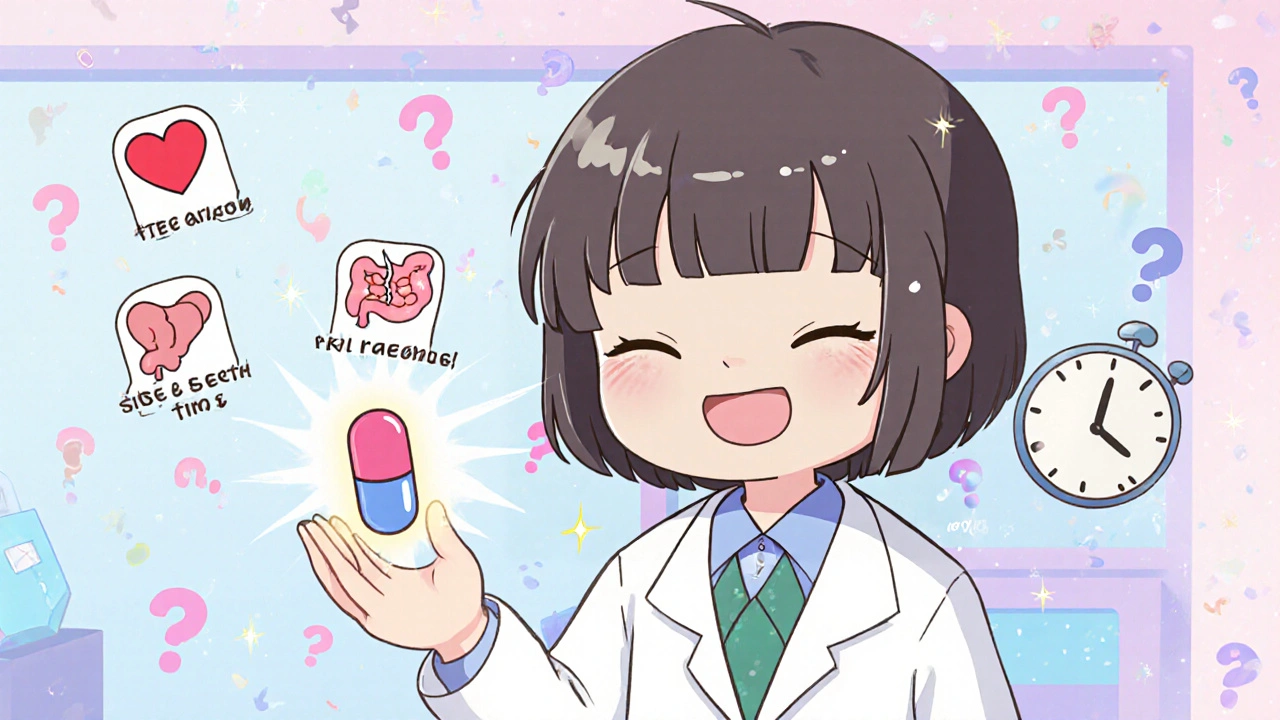Medication Risk-Benefit Calculator
Is This Medication Worth It For You?
Enter your specific situation to see if the benefits outweigh the risks.
Result
Enter values to see your personalized assessment
Net Benefit: 0%
(Benefit minus side effect risk)
Risk Level:
(Is this worth taking?)
Every time a doctor prescribes a pill, they’re not just handing out a solution-they’re making a calculated gamble. The question isn’t just does this work? It’s does the fix cost more than the problem? That’s the core of benefit-risk assessment: deciding if a medication’s good outcomes are worth the bad ones.
It’s Not About Eliminating Risk-It’s About Managing It
No medication is risk-free. Even aspirin can cause stomach bleeding. Antibiotics can trigger life-threatening allergies. Chemo can destroy healthy cells along with cancer. But if you have a life-threatening illness, a 10% chance of severe side effects might be worth it if it gives you a 50% shot at living five more years. That’s why doctors don’t just look at side effect lists. They look at context. A drug that’s too risky for someone with mild high blood pressure might be the only option for someone with aggressive cancer. The U.S. Food and Drug Administration (FDA) formalized this thinking in 2013, making benefit-risk assessment the legal foundation for approving every new drug. For a medication to be approved, the FDA must be convinced: the benefits must outweigh the risks. Not just on average. For the people who need it most.How Doctors Actually Do the Math
It’s not a spreadsheet. It’s a conversation shaped by data. Doctors start by asking: What’s the condition? How bad is it? What else is out there? For example, type 2 diabetes affects 37.3 million Americans. Left untreated, it can lead to kidney failure, blindness, and amputations. So when a doctor considers a new diabetes drug, they don’t just check if it lowers blood sugar. They ask: Does it reduce heart attacks? Does it cause weight gain? Does it trigger pancreatitis? Is there a cheaper, safer option already on the shelf? There are eight major classes of diabetes meds-each with different trade-offs. One might help you lose weight but cause diarrhea. Another might protect your heart but raise your risk of bladder cancer. Then comes the benefit side. Is the drug proven to extend life? Improve daily function? Reduce hospital visits? Studies measure this in real numbers: a 35% five-year survival rate instead of 10%, a 25% drop in stroke risk, or a 30% improvement in mobility for Parkinson’s patients. These aren’t guesses. They come from clinical trials with thousands of participants. Risks are measured the same way. If 15 out of 100 patients in a trial had severe nausea, that’s a 15% risk. If one in a thousand had a dangerous liver reaction, that’s a 0.1% risk. But numbers alone don’t tell the full story. Some side effects are temporary. Others last a lifetime. Some can be managed. Others can’t.
Patients Don’t See Risk the Way Doctors Do
Here’s where things get messy. Patients and doctors often see the same data-and come to different conclusions. A 2023 study found that 65% of Parkinson’s patients would accept a 20% chance of uncontrollable shaking (dyskinesia) if it meant a 30% improvement in walking and movement. Doctors, on average, thought patients would only accept a 12% risk. Why? Because patients aren’t just thinking about survival. They’re thinking about quality. Can they hug their grandkids? Walk to the store? Sleep through the night? In oncology, patients on Keytruda for metastatic melanoma know there’s a 40% chance of serious immune reactions-rashes, colitis, even heart inflammation. But they also know that without it, their chance of living five years is 10%. With it, it jumps to 35%. Most choose the drug. Not because they’re reckless. Because they’re tired of dying. Meanwhile, a patient newly diagnosed with high blood pressure might refuse an ACE inhibitor because they heard about a 0.1% chance of angioedema-a rare but terrifying swelling of the throat. They don’t realize that same drug cuts their stroke risk by 25%. To them, the risk feels huge. To their doctor, it’s tiny. But the patient’s fear is real. And ignoring it leads to non-adherence. One in three people stop taking their blood pressure meds within a year-not because they don’t care, but because they didn’t understand the trade-off.The System Isn’t Perfect-And It’s Getting More Complex
The FDA’s benefit-risk framework is the gold standard. But it’s not foolproof. A 2020 report found that different FDA review teams reached different conclusions on similar drugs 32% of the time. Why? Because the framework is qualitative. It doesn’t give you a score. It asks you to judge. And it’s slow. New drugs approved under fast-track programs often lack long-term safety data. About 60% of these drugs have unknown long-term risks. That means doctors are prescribing medicines with a gap in the data. They’re betting on what they know now, hoping the future doesn’t reveal something worse. There’s also a glaring gap in who gets studied. Clinical trials are 75% White, even though minorities make up 40% of the U.S. population. That means side effect profiles for Black, Hispanic, or Indigenous patients might be underreported. A drug that’s safe for one group might be riskier for another-and we won’t know until it’s too late. The industry is trying to fix this. Pharma companies now spend an average of $150 million per drug on post-market safety studies. Some use AI to spot hidden risks in electronic health records. Roche’s ARIA platform, for example, cut prediction errors by 30% by analyzing real-world data from millions of patients.
What This Means for You
If you’re prescribed a new medication, don’t just nod and take it. Ask:- What’s the goal? Is this to cure, control, or just make me feel better?
- What are the odds of serious side effects? Not just ‘possible’-what’s the actual percentage?
- What happens if I don’t take it? What’s the risk of doing nothing?
- Are there cheaper, safer options? What’s the next best thing?
- How will we know if it’s working-or if it’s hurting me?
The Future: Personalized Risk, Not One-Size-Fits-All
By 2030, benefit-risk assessments won’t be based on averages. They’ll be based on you. Advances in genomics, wearable sensors, and AI will let doctors predict how *you* will respond to a drug-not just how the average person does. Will your genes make you more likely to have liver damage? Will your activity level make you more prone to falls on a sedating medication? Will your diet interact with this new statin? The goal is simple: stop guessing. Start knowing. Reduce side effects by 40%. Make every prescription truly tailored. But that future won’t arrive if we ignore the present. Right now, benefit-risk assessment is the invisible hand guiding every pill you take. It’s the reason some drugs get approved, others get rejected, and others come with black box warnings. It’s why your doctor spends 15 to 20 minutes explaining a simple prescription. It’s not about fear. It’s about respect. Respect for your body. Respect for your life. And respect for the fact that sometimes, the best medicine isn’t the one with the fewest side effects-it’s the one that gives you the most of your life back.Why do doctors prescribe medications with serious side effects?
Doctors prescribe medications with serious side effects when the condition being treated is severe or life-threatening, and there are few or no safer alternatives. For example, chemotherapy drugs damage healthy cells, but they can also shrink tumors and extend life in cancer patients. The decision is based on whether the benefit-like survival, reduced pain, or restored function-outweighs the risk. It’s not about ignoring danger; it’s about choosing the least bad option.
How do I know if a medication’s risks are worth it for me?
Ask your doctor to explain the numbers: What’s the chance the drug will help? What’s the chance it will cause a serious side effect? Compare that to what happens if you don’t take it. Use free patient decision aids from the FDA or trusted health organizations. If you’re unsure, ask for a second opinion. Your tolerance for risk matters-some people prioritize living longer, others prioritize feeling normal day to day. There’s no right answer, only the right answer for you.
Why do some patients refuse medications even when they’re recommended?
Patients often refuse medications because they misunderstand risk. A 0.1% chance of a rare side effect sounds terrifying-even though it’s less likely than being struck by lightning. Meanwhile, they might underestimate the real danger of their untreated condition. Fear, misinformation, and poor communication play big roles. That’s why doctors now spend more time explaining trade-offs, and why patient education tools are helping reduce non-adherence by over 20%.
Are generic drugs safer than brand-name ones?
No. Generic drugs contain the same active ingredient, in the same dose, and are held to the same safety and effectiveness standards as brand-name drugs by the FDA. The side effect profile is virtually identical. The only differences are in inactive ingredients (like fillers), which rarely cause issues. Choosing generics isn’t about safety-it’s about cost. You’re not trading safety for savings; you’re trading price for the same proven benefit-risk profile.
How does the FDA decide if a drug is safe enough to approve?
The FDA doesn’t require a drug to be risk-free. It requires that the benefits clearly outweigh the risks for the intended population. They look at clinical trial data on effectiveness, side effects, and how those side effects compare to the disease’s natural progression. They also consider patient input, especially for serious conditions with no good treatments. If a drug helps people live longer or avoid hospitalization-and the side effects are manageable-it can be approved, even if some risks are serious.
Why are some drugs pulled from the market after approval?
Drugs are pulled when new, serious safety issues appear after thousands or millions of people have used them. Clinical trials involve only a few thousand people over months or years. Real-world use reveals rare side effects, interactions with other drugs, or long-term damage that wasn’t visible before. When the risk turns out to be higher than expected-or more dangerous than the disease-it’s pulled. This is why post-market safety monitoring, like the FDA’s Sentinel program, is so important.



Comments
It’s fascinating how benefit-risk calculus is essentially applied existentialism in white coats. We’re all just probability beings navigating uncertainty-except here, the stakes are your liver, your kidneys, your next birthday. The FDA’s framework isn’t just regulatory; it’s a philosophical compromise between the sanctity of life and the inevitability of harm. And yet… we still treat patients like data points. 🤔
Let’s be real-this whole ‘benefit-risk’ thing is just corporate propaganda wrapped in clinical jargon. The FDA’s ‘approval’ means nothing when Big Pharma funds 90% of the trials. They cherry-pick data, bury adverse events, and push drugs that make patients dependent for life. And don’t get me started on the ‘AI monitoring’ nonsense-it’s all smoke and mirrors. You think Roche’s ARIA actually catches anything? Or just helps them sell more subscriptions? 🤖💀
Hey, I just want to say-this post is so important. So many people feel scared or confused when they get a new prescription. You don’t have to be a doctor to understand your own body. If your doctor doesn’t take the time to explain the numbers, find someone who will. And if you’re nervous? That’s okay. Ask again. And again. Your life matters more than their schedule. 💪❤️
Ah yes, the sacred ritual of pharmaceutical appeasement. We’ve turned medicine into a cult of quantified suffering. You don’t cure disease anymore-you ‘manage’ it. And we celebrate that as progress? The real tragedy isn’t the side effects-it’s that we’ve normalized living in a state of controlled deterioration. You take a pill to fix your blood pressure, then another to fix the gut damage from the first, then a third to fix the depression from knowing you’re now a walking pharmacopeia. This isn’t healthcare. It’s subscription-based survival. 🌑
Why are we even pretending this is science? The FDA approves drugs based on ‘judgment’? That’s not a system-that’s a lottery. And the fact that they let drugs with unknown long-term risks fly under fast-track? That’s criminal negligence. Meanwhile, my neighbor’s kid got prescribed Adderall for ‘focus’ and now she’s on five meds. This isn’t medicine. It’s chemical capitalism. 🤬
One cannot help but observe the epistemological collapse of modern pharmacology. The Cartesian dualism between mind and body has been weaponized by the pharmaceutical-industrial complex to commodify suffering as a solvable equation. The very notion of ‘benefit-risk’ assumes a universal subject-yet we know, through the lens of postcolonial epistemology, that clinical trials are constructed upon the erasure of non-Western somatic epistemologies. The 75% White trial population is not an accident-it is the colonial archive made manifest in lipid profiles and CRP levels. We must decolonize pharmacovigilance. Until then, we are merely administering hegemony in pill form. 🌍🩺
USA is the only country that lets drug companies advertise directly to patients. That’s why people panic over a 0.1% risk. In Europe, they just trust their doctors. Here? You get a 30-second commercial screaming ‘THIS DRUG CAN KILL YOU’ while showing a smiling grandma hiking. It’s a psychological war. And we’re losing. 🇺🇸💣
It is my professional observation that the proliferation of patient decision aids, while ostensibly well-intentioned, serves primarily to abdicate physician responsibility. The burden of risk interpretation is now placed upon laypersons with no training in biostatistics or pharmacokinetics. This is not empowerment-it is institutional negligence dressed in motivational language. The physician-patient relationship has been reduced to a transactional exchange of brochures. A grave deterioration.
Man, I love how this post doesn’t sugarcoat it. It’s wild to think about how much trust we put in doctors and drugs without even knowing the math behind it. I used to be scared of every side effect listed-until my grandma told me, ‘Honey, if the pill lets me dance at your wedding, it’s worth the tummy ache.’ That’s the real calculus. Not percentages. Presence. 🎉❤️
Let’s not pretend the FDA is impartial. They’re funded by industry fees. The ‘black box warnings’? Those are just marketing disclaimers. And AI monitoring? Please. If it were real, we wouldn’t have had 12 drugs pulled in the last 5 years for sudden heart risks that were obvious in phase 2. This whole system is a house of cards built on PR and placebo trust. 🎭
As someone who grew up in a family where medicine meant herbs and prayers, I’m glad we’re talking about this. But I also worry we’re losing the human part. My abuela always said, ‘The body knows what it needs.’ Maybe we need more listening-not just more data. Maybe the best medicine isn’t in a pill at all. Maybe it’s in someone sitting with you while you cry about the fear. 🌿🙏